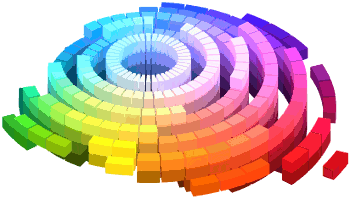
Power Tie
June 9, 2011 The first computer program I was paid to write was a computer-aided instruction (CAI) program in psychology. It's hard to believe, but the program was written in APL, and the only I/O device was a typewriter terminal. Since the only formal instruction in computer programming I've ever had was a five hour short course in Fortran taught by another student, this APL program was quite a hack. It would look quite different if I were to write it today; but it worked, the psychology professor who wanted it was happy, and I got a little spending money. The physical sciences are quite different from psychology, but the one thing that links these disparate fields is experiment. Experiment is the centerpiece of the scientific method, because everyone believes a good experiment, and experimentalists are always concerned about doing things right. I remember a commentary about science that a theoretician always has full faith in his theories, but an experimentalist can still find some fault with his published results. Color is easily quantified in a physical measurement. You just measure the spectrum of the light. Color as it exists to the mind is an entirely different thing. One man's mauve is another man's purple. Red was my favorite color when I was young, and I especially enjoyed the red bulbs on our Christmas tree. But, what, exactly, is the "quality of redness?" That's something I discussed in a previous article (The Quality of Chairness, December 3, 2010). Andrew Elliot, a professor of psychology at the University of Rochester, has been performing some interesting experiments that involve the color, red.[1-2] The most recent of these, published in the Journal, Emotion,[2] show that humans react more forcefully and more quickly when they see red, but they're oblivious to the idea that the color has that affect on them. | sRGB approximation of the of the colors appearing in the 1929 Munsell Book of Color. Image via Wikimedia Commons by "SharkD" |
 | Power tie to an extreme. A portrait of Cardinal Richelieu by Philippe de Champaigne (c. 1637). Image via Wikimedia Commons |
References:
- Susan Hagen, "Color Red Increases the Speed and Strength of Reactions," University of Rochester Press Release, June 2, 2011.
- Andrew J. Elliot and Henk Aarts, "Perception of the color red enhances the force and velocity of motor output," Emotion, vol. 11, no. 2 (April, 2011), pp. 445-449.
- Susan Hagen, "Psychological Study Reveals That Red Enhances Men's Attraction to Women," University of Rochester Press Release, October 28, 2011.
- Liz Hurley, "Wearing red 'boosts attraction'," BBC News, October 28, 2008.
- Susan Hagen, "Women Attracted to Men in Red, Research Shows," University of Rochester Press Release, August 2, 2011.
- Andrew J. Elliot and Henk Aarts, "Perception of the color red enhances the force and velocity of motor output," Emotion, vol. 11, no. 2 (April, 2011), pp. 445-449.